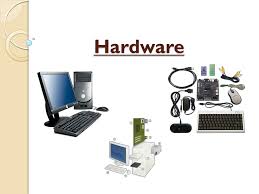 HARDWARE FEATURES
HARDWARE FEATURES
Hardware when a computing context is concerned) is the collection of physical elements that constitutes a computer system. Computer hardware is the physical parts or components of a computer, such as the monitor, mouse, keyboard,computer data storage, hard disk drive (HDD), graphic cards, sound cards, memory, motherboard, and so on, all of which are physical objects that are tangible. In contrast, software is instructions that can be stored and run by hardware.
Sales
For the third consecutive year, U.S. business-to-business channel sales (sales through distributors and commercial resellers) increased, ending 2013 up nearly 6 percent at $61.7 billion. The impressive growth was the fastest sales increase since the end of the recession. Sales growth accelerated in the second half of the year peaking in fourth quarter with a 6.9 percent increase over the fourth quarter of 2012.
CASE:
The computer case is a plastic or metal enclosure that houses most of the components.
Those found on desktop computers are usually small enough to fit under a desk, however in recent years more compact designs have become more common place, such as the all-in-one style designs from Apple, namely the iMac.
Power supply
A power supply unit (PSU) converts alternating current (AC) electric power to low-voltage DC power for the internal components of the computer. Laptops are capable of running from a built-in battery, normally for a period of hours.
Input and output peripherals
Input and output devices are typically housed externally to the main computer chassis. The following are either standard or very common to many computer systems.
- Input
- Input devices allow the user to enter information into the system, or control its operation. Most personal computers have a mouse and keyboard, but laptop systems typically use a touchpad instead of a mouse. Other input devices include webcams, microphones, joysticks, and image scanners.
- Output device
- Output devices display information in a human readable form. Such devices could include printers, speakers, monitors or a Braille embosser.
- The motherboard is the main component of a computer. It is a large rectangular board with integrated circuitry that connects the other parts of the computer including the CPU, the RAM, the disk drives(CD, DVD, hard disk, or any others) as well as any peripherals connected via the ports or the expansion slots.
Components directly attached to or part of the motherboard include:
- The CPU (Central Processing Unit) performs most of the calculations which enable a computer to function, and is sometimes referred to as the “brain” of the computer. It is usually cooled by a heat sink and fan. Most newer CPUs include an on-die Graphics Processing Unit (GPU).
- The Chipset, which includes the north bridge, mediates communication between the CPU and the other components of the system, including main memory.
- The Random-Access Memory (RAM) stores the code and data that are being actively accessed by the CPU.
- The Read-Only Memory (ROM) stores the BIOS that runs when the computer is powered on or otherwise begins execution, a process known as Bootstrapping, or “booting” or “booting up”. The BIOS (Basic Input Output System) includes boot firmware and power management firmware. Newer motherboards use Unified Extensible Firmware Interface (UEFI) instead of BIOS.
- Buses connect the CPU to various internal components and to expand cards for graphics and sound.
- The CMOS battery is also attached to the motherboard. This battery is the same as a watch battery or a battery for a remote to a car’s central locking system. Most batteries are CR2032, which powers the memory for date and time in the BIOS chip.
